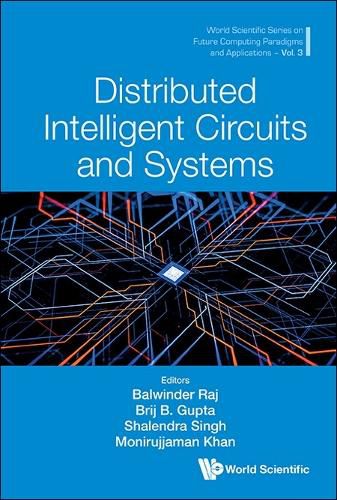Readings Newsletter
Become a Readings Member to make your shopping experience even easier.
Sign in or sign up for free!
You’re not far away from qualifying for FREE standard shipping within Australia
You’ve qualified for FREE standard shipping within Australia
The cart is loading…






This title is printed to order. This book may have been self-published. If so, we cannot guarantee the quality of the content. In the main most books will have gone through the editing process however some may not. We therefore suggest that you be aware of this before ordering this book. If in doubt check either the author or publisher’s details as we are unable to accept any returns unless they are faulty. Please contact us if you have any questions.
The main objective of this book is to provide insights into recent advances in distributed intelligent circuits, systems and their applications. Distributed intelligence is the key enabler for innovations in machine-to-machine communications. The innovations are directed towards keeping existing algorithms as the base and developing new intelligent systems by employing smart technologies. Artificial intelligence (AI) and, more specifically, deep learning (DL) are receiving significant attention in assisting doctors in the detection of disease patterns without much human intervention. In agriculture, robots automate slow, repetitive and dull tasks, allowing farmers to focus more on improving overall production yields.The evolving trends point to the interface of artificial intelligence with machines being a factor in enhancing the decision-making capabilities of smart machines. This book provides relevant theoretical frameworks that include basic models, algorithms, circuit designs and the latest developments in experimental aspects in the field of distributed intelligence systems for industrial applications. The challenges encountered in the development of models for distributed intelligence systems for environmental monitoring are mitigated with artificial intelligence, machine learning and deep learning. This book identifies challenges and helps in applying solutions in the development of advanced intelligent systems for environmental monitoring.
$9.00 standard shipping within Australia
FREE standard shipping within Australia for orders over $100.00
Express & International shipping calculated at checkout
This title is printed to order. This book may have been self-published. If so, we cannot guarantee the quality of the content. In the main most books will have gone through the editing process however some may not. We therefore suggest that you be aware of this before ordering this book. If in doubt check either the author or publisher’s details as we are unable to accept any returns unless they are faulty. Please contact us if you have any questions.
The main objective of this book is to provide insights into recent advances in distributed intelligent circuits, systems and their applications. Distributed intelligence is the key enabler for innovations in machine-to-machine communications. The innovations are directed towards keeping existing algorithms as the base and developing new intelligent systems by employing smart technologies. Artificial intelligence (AI) and, more specifically, deep learning (DL) are receiving significant attention in assisting doctors in the detection of disease patterns without much human intervention. In agriculture, robots automate slow, repetitive and dull tasks, allowing farmers to focus more on improving overall production yields.The evolving trends point to the interface of artificial intelligence with machines being a factor in enhancing the decision-making capabilities of smart machines. This book provides relevant theoretical frameworks that include basic models, algorithms, circuit designs and the latest developments in experimental aspects in the field of distributed intelligence systems for industrial applications. The challenges encountered in the development of models for distributed intelligence systems for environmental monitoring are mitigated with artificial intelligence, machine learning and deep learning. This book identifies challenges and helps in applying solutions in the development of advanced intelligent systems for environmental monitoring.